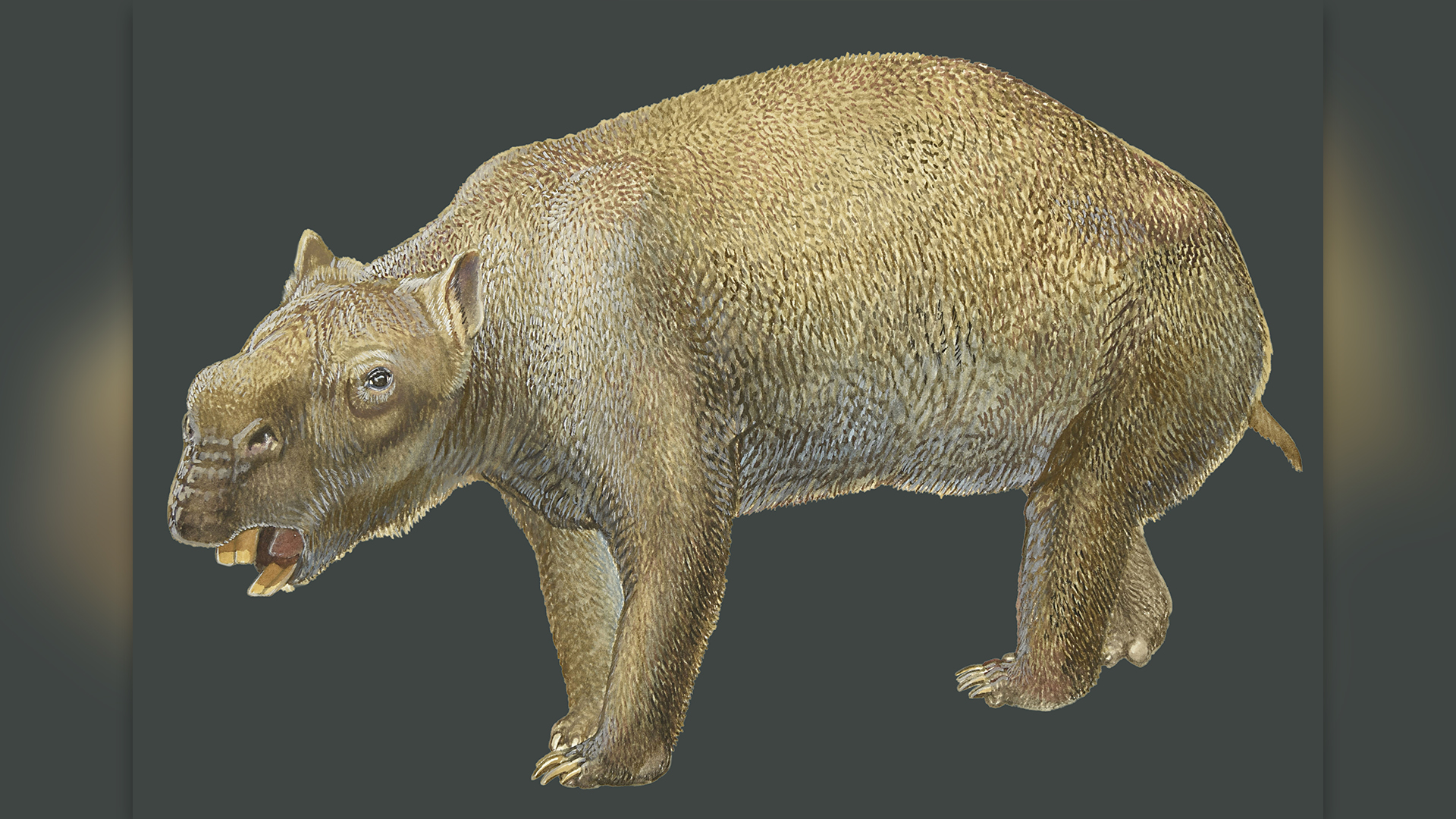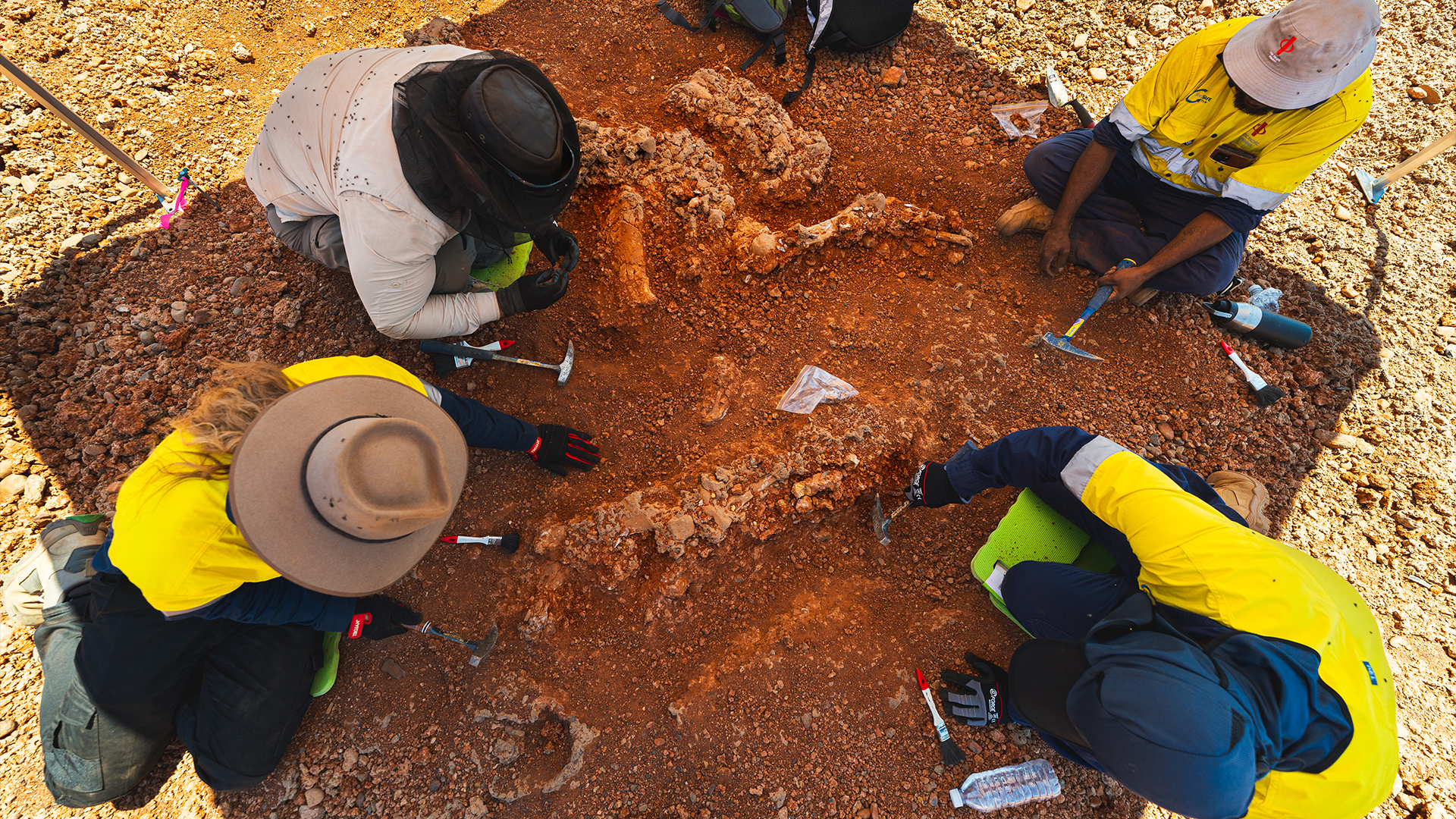Ancient skeletons of largest-ever marsupial unearthed in Australia
Diprotodon dates back to the Pleistocene epoch and is a giant relative of wombats and koalas.

A "unique" fossil site in Western Australia is revealing the elusive remains of the world's largest ever marsupial, a museum has announced.
The skeletons belong to Diprotodon, which is related to wombats and koalas and lived during the Pleistocene epoch (about 2.6 million to 11,700 years ago). These megafauna were giants, and grew up to 5.6 feet (1.7 meters) tall at the shoulder, 12.5 feet (3.8 m) long and could weigh 3.1 tons (2.8 metric tons).
Researchers have found at least 10 Diprotodon skeletons at the site but have yet to excavate them fully. Adults and juveniles may be among the fossils, which could mean the site was on a major migration route for Diprotodon, the team said in a statement released by the Western Australian Museum on Oct. 19.
There are parts of the ancient marsupials' skulls, bones and teeth lying all over the ground, Gilbert Price, a paleontologist at the University of Queensland who is part of the excavation, said during a video interview at the site.
"I've never seen a fossil site quite like this," Price said. "It's not normal to be able to walk across the landscape and just look on the ground and say, 'That's a vertebra, there's another part of a leg bone, there's a skull over there…' This is the sort of stuff that you might see in a movie like Jurassic Park."
Diprotodon emerged around 2 million years ago and went extinct about 25,000 years ago. Climate change and human activity may have been factors in their extinction, but they co-existed with Aboriginal people for more than 20,000 years, according to the Australian Museum in Sydney.
Sign up for the Live Science daily newsletter now
Get the world’s most fascinating discoveries delivered straight to your inbox.

Researchers have found Diprotodon fossils all across Australia. They were first unearthed at the site of the new excavation, located in Du Boulay Creek, in 1991. The new discoveries establish the creek as a site of major scientific significance, according to another statement.
The researchers also found evidence of ancient mangroves and crab fossils among the megafauna. Price said the fossil deposit combines land animals like Diprotodon with "estuarine or almost marine types of conditions."
"It's something that's absolutely unique in the fossil record, not only to this part of Western Australia, but the entire continent itself," he added.

Patrick Pester is the trending news writer at Live Science. His work has appeared on other science websites, such as BBC Science Focus and Scientific American. Patrick retrained as a journalist after spending his early career working in zoos and wildlife conservation. He was awarded the Master's Excellence Scholarship to study at Cardiff University where he completed a master's degree in international journalism. He also has a second master's degree in biodiversity, evolution and conservation in action from Middlesex University London. When he isn't writing news, Patrick investigates the sale of human remains.










